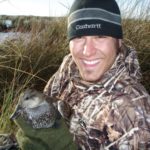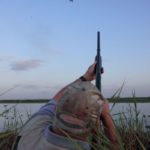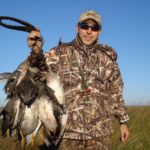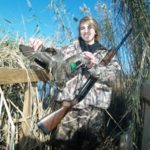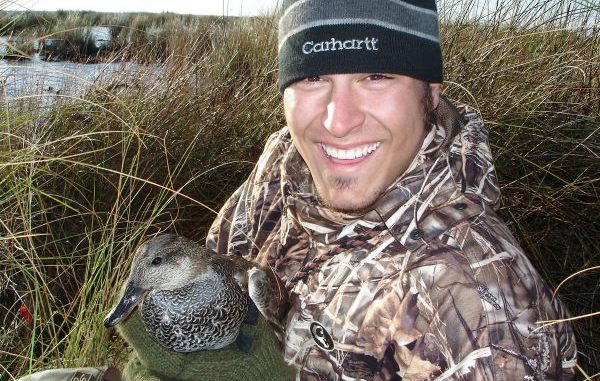
A veritable duck-hunting gold mine is stretched out along Louisiana’s coast in the form of LDWF-managed wildlife management areas and refuges.
And waterfowlers enjoyed one of their best seasons in these public hunting areas in a long, long time last season, according to veteran biologist Cassidy Lejeune.
Hunters’ choices include Atchafalaya Delta, Pass a Loutre, Point-aux-Chenes and Salvador WMAs, part of close to a half-million acres of coastal marsh Lejeune and about 30 other folks oversee.
The 2014-15 season results Atchafalaya Delta and Pass a Loutre WMAs will knock your insulated socks off, Lejeune said.
“We definitely have a good number of duck hunters,” he said. “Typically, they do well, but this past year was the best in five years — 3.4 ducks average per hunter is really impressive.
“In our opinion, it’s really successful.”
Lejeune said he was has been thrilled this spring and summer to walk on the Atchafalaya Delta WMA.
“The Atchafalaya Delta is amazing to see, the amount of aquatic vegetation there is,” he explained. “Conditions on the Delta are as good or better as last year, and if the ducks show up …,” he said, his voice trailing off while thinking about the potential harvest. “You can’t predict what the ducks are going to do. Conditions are favorable if the ducks show up.”
Ducks, deer, squirrels and rabbits on these public-access lands have benefitted and will continue to benefit from the lack of extreme weather conditions — tropical storms, hurricanes, drought, flooding, bitterly cold winter, etc. — this year, the veteran biologist said.
Above-average rainfall in the late spring and early summer months has been good for vegetation growth on the coastal WMAs. Mississippi River and Atchafalaya River stages have been high enough through mid-July to have a positive impact, i.e., dumping high sediment loads to help build and sustain deltas and also keep salinity fairly low in some area, which can benefit coastal wetlands.
“Tropical storms have caused significant impacts to coastal WMAs over the years,” Lejeune said. “Fortunately, we have not had a significant storm in the last three years.
“Hurricane Isaac (in 2012) was the last storm to impact our coastal WMAs.”
He also talked specifically about Pass a Loutre WMA, noting the teal harvest there was out of sight last season.
“Pass a Loutre overall had the highest average teal per hunter effort,” Lejeune said. “It has really good duck habitat.”
And duck-hunting pressure is low because of its remoteness, he said.
“If they’re willing to put in the effort (hunters) can do pretty well from the hunting perspective,” Lejeune said.
That will be true this season, if those teal and ducks come down.
“The latest word we got from our guys at Pass a Loutre is that conditions are very good,” Lejeune said.
Pointe-aux-Chenes WMA’s habitat is in similar shape, he said.
Obviously, the table is set for more duck-hunting and deer-hunting success on the prime coastal areas.
To whet the appetite of duck hunters who might want to frequent the top coastal WMAs, particularly on the greatly anticipated first day of the season, feast your eyes on these numbers provided by LDWF’s Shane Grainier.
Overall, he reported, opening day numbers on those areas this past season easily topped the previous five seasons for ducks per hunter effort:
• 2014-15: 1,303 hunters, 4.1 ducks
• 2013-14: 1.316 hunters, 2.1 ducks
• 2012-13: 1,254 hunters, 3.5 ducks
• 2011-12: 1,023 hunters, 3.8 ducks
• 2010-11: 758 hunters, 3.4 ducks
• 2009-10: 772 hunters, 1.3 ducks
Granier’s 2014-15 season summary on hunter participation/harvest, based on 11 bag checks, is just as appetizing.
Atchafalaya Delta WMA
• Estimated ducks harvested — 8,172 (Main Delta 1,504, Main Delta Limited Access Area 120, Wax Delta 5,865 and Wax Delta LAA 683)
• Estimated hunters —2,385 (425 on Main Delta, 25 on Main Delta LAA, 1,755 on Wax Lake Delta and 180 on Wax Lake Delta LAA)
• Kill per hunter — 3.4 (3.5 on Main Delta, 4.8 on Main Delta LAA, 3.3 on Wax Lake Delta and 3.8 on Wax Lake Delta LAA)
• Hunters checked —1,399 (262 on Main Delta, 12 on Main Delta LAA, 1,017 on Wax Lake Delta and 108 on Wax Lake Delta WMA)
The top three species harvested, in descending order, were green-winged teal, blue-winged teal and gadwall.
Pass A Loutre WMA
• Estimated ducks harvested — 3,459 (Pass a Loutre 3,279 on Pass a Loutre and 180 Pass a Loutre LAA)
• Estimated hunters — 740 (710 on Pass a Loutre and 30 on Pass a Loutre LAA)
• Kill per hunter — 4.7 (4.6 on Pass a Loutre and 6.0 on Pass a Loutre LAA)
• Hunters checked — 448 (435 on Pass a Loutre and 13 on Pass a Loutre LAA)
The top three species harvested, in descending order, were gadwall, blue-winged teal and green-winged teal.
Salvador WMA
• Estimated ducks harvested — 140 (86 on Davis Ponding Area, 5 on Salvador WMA LAA and 49 on Salvador WMA)
• Estimated hunters — 170 (100 on Davis Ponding Area, 5 on Salvador WMA LAA and 65 on Salvador WMA)
• Kill per hunter — 0.8 (0.9 on Davis Ponding Area, 1.0 on Salvador WMA LAA and 0.8 on Salvador WMA)
• Hunters checked — 81 (53 on Davis Ponding Area, 3 on Salvador WMA LAA and 25 on Salvador WMA)
The top three species harvested, in descending order, were ring-necked ducks, blue-winged teal and wood duck.
Point-aux-Chenes WMA
• Estimated ducks harvested — 7,378 (Grand Bayou Unit 2,181, Montegut Unit LAA 645, Point-aux-Chenes Unit 893, Point-aux-Chenes Unit LAA 42 and Unmanaged Area 3,617)
• Estimated hunters —2,363 (615 on Grand Bayou Unit, 130 on Montegut Unit LAA, 230 on Ponte-aux-Chenes Unit, 8 on Pointe-Aux-Chenes Unit LAA and 1,380 on Unmanaged Area)
• Kill per hunter — 3.1 (3.5 on Grand Bayou Unit, 5.0 on Montegut Unit LAA, 3.9 on Pointe-aux-Chenes Unit, 5.3 on Pointe-aux-Chenes LAA and 2.6 on Unmanaged Area)
• Hunters Checked — 1,454 (521 on Grand Bayou Unit, 81 on Montegut Unit, 172 on Pointe-aux-Chenes Unit, 3 on Point-aux-Chenes Unit LAA and 677 on Unmanaged Area.
The top three species harvested, in descending order, were were green-winged teal, scaup and blue-winged teal.
The grand totals for all four WMAs were:
• Estimated ducks harvested — 19,149
• Estimated hunters — 4,658
• Kill per hunter — 3.4
• Hunters Checked — 3,382
No wonder Lejeune said this season’s prospects for duck hunting are decent, at worst, on coastal WMAs. The habitat conditions are ripe due to the high amount of rainfall as well as tropical weather inactivity across the coast for the past three years.
“Submerged aquatic vegetation growth is very impressive at all of the coastal WMAs,” he said. “The only area that is declining from a waterfowl habitat perspective is Salvador WMA.
“Salvador’s waterfowl numbers have declined recently due to what we feel is a reduction in shallow open-water habitat. Some of the open water is closing to increase emergent vegetation.”
Lejeune said ducks are attracted to the delta marshes on Pass a Loutre and Atchafalaya Delta WMAs, which makes them popular duck-hunting destinations. He expects them to be the premier areas along the coast this season — if no hurricanes or tropical storms make unwelcome visits.
To get an early start on waterfowl hunting, don’t pass up the special teal season in September on the CNR Division WMAs, particularly Point-aux-Chenes WMA.
To get a better idea about where most of the action can happen, waterfowlers had this kind of day on the WMAs on Sept. 13, 2014:
Atchafalaya Delta WMA
• Estimated teal harvested (100 percent blue-winged teal) — 37 (22 on the Main Delta and 15 on the Wax Lake Delta)
• Estimated hunters — 40 (15 on the Main Delta, 0 on Main Delta LAA, 25 on the Wax Lake Delta and 0 on Wax Lake Delta LAA)
• Kill per punter: 0.9 (1.5 on Main Delta, 0 on Main Delta LAA, 0.6 on Wax Lake Delta and 0 on Wax Lake Delta LAA)
• Hunters Checked: 19 (6 on Main Delta, 0 on Main Delta LAA, 13 on Wax Lake Delta and 0 on Wax Lake Delta LAA)
Pass a Loutre WMA
• Estimated ducks harvested (100 percent blue-winged teal) — 34 (34 on Pass a Loutre and 0 on Pass a Loutre LAA)
• Estimated gunters — 15 (15 on Pass a Loutre and 0 on Pass a Loutre LAA)
• Kill per hunter — 2.3 (2.3 on Pass a Loutre and 0 on Pass a Loutre LAA)
• Hunters checked — 7 (7 on Pass a Loutre and 0 on Pass a Loutre LAA)
Salvador WMA
• Estimated ducks harvested (100 percent blue-winged teal) — 51 (36 on Davis Ponding Area, 0 on Salvador WMA LAA and 15 on Salvador WMA)
• Estimated hunters — 30 (15 on Davis Ponding Area, 0 on Salvador WMA LAA and 15 on Salvador WMA
• Kill per hunter — 1.7 (2.4 on Davis Ponding Area, 0 on Salvador WMA LAA and 1.0 on Salvador WMA)
• Hunters Checked — 13 (9 on Davis Ponding Area, 0 on Salvador WMA LAA and 4 on Salvador WMA)
Point-Aux-Chenes WMA
• Estimated ducks harvested (100 percent blue-winged teal) — 103 (37 on Grand Bayou Unit, 42 on Montegut Unit LAA, 0 on Pointe-aux-Chenes Unit, 0 on Pointe-aux-Chenes Unit LAA and 24 on Unmanaged Area)
• Estimated Hunters: 85 (10 on Grand Bayou Unit, 10 on Montegut Unit LAA, 5 on Pointe-aux-Chenes Unit, 0 on Pointe-aux-Chenes Unit LAA and 60 on Unmanaged Unit)
• Kill per hunter — .2 (3.7 on Grand Bayou Unit, 4.2 on Montegut Unit LAA, 0 on Pointe-aux-Chenes Unit, 0 on Pointe-aux-Chenes Unit LAA and 0.4 on Unmanaged Area)
• Hunters checked — 34 (7 on Grand Bayou Unit, 5 on Montegut Unit LAA, 2 on Pointe-aux-Chenes Unit, 0 on Pointe-aux-Chenes Unit LAA and 20 on Unmanaged Area)
The totals for that Wednesday last September were an estimated 225 teal harvested by about 170 hunters, with an actual kill of 1.3 per hunter and 73 actual hunters checked.
But the CNR Division has more to offer for those who enjoy swining a shotgun barrel and shooting on the wing.
Doves, coots, gallinules, mergansers and geese also are bagged during each hunting season, Lejeune wrote in his report.
Some of the optimum dove-hunting opportunities are on Pointe-aux-Chenes WMA, where the staff plans and manages dove fields at the Point Farm Unit.
Hunters utilizing the dove fields during the 2014-15 season harvested an average of 4.4 doves per hunt, he said.
“The outlook for the 2015-16 season is respectable since the fields were planted prior to the high amount of rainfall experienced in June,” the veteran biologist said.
That coastal areas provide a variety of game bird hunting opportunities is reflected in the fact that in 2014-15 WMA hunters harvested more than 2,700 coots and approximately 140 gallinules.
As for coots, an estimated 766 were killed last season on the Atchafalaya Delta WMA, 68 on the Main Delta, 662 on the Wax Lake Delta and 36 on Wax Lake Delta LAA. Pass a Loutre WMA accounted for 50 while 110 were bagged on Salvador WMA.
The 2014-15 coot hotspot was Pointe-aux-Chenes WMA, which had 1,840. The majority were killed on the Grand Lake Unit (730) and Unmanaged Area (820). Also, 80 were downed on the Montegut Unit LAA.
Pointe-aux-Chenes also had the only gallinules harvested in 2014-15. Hunters shot 140 of them.
Geese on the CNR Division WMAs?
You betcha.
Seventeen snow/blue geese were killed last season on Atchafalaya Delta WMA — 12 on the Wax Lake Delta and five on the Wax Lake Delta LAA, according to Granier.
Also, he reported, four speckled belly geese were killed on the Wax Lake Delta.
The awesome thing about this widespread duck-hunting mecca is the deer-hunting success last season on at least one of those WMAs rivaled the success of the LDWF’s Coastal and Nongame Resources Division’s waterfowl hunting — and would be the envy of any deer-hunting camp in Louisiana.
The Atchafalaya Delta WMA and its “spoil islands” on high ground just experienced its “greatest harvest of deer (more than 200) on record for the Atchafalaya Delta WMA.”
Lejeune wrote in his annual report that he expects the deer harvest there to be similar to or above the five-year average this fall.
That five-year average? One hundred seventy-five deer per season.
“Yeah, the Atchafalaya Delta is a unique story,” Lejeune said. “It has a healthy deer herd, and habitat conditions are improving.”
Some of the most-consistent deer-hunting success is on the “big island” that was formed in the 1960s, 1970s and early 1980s by dredging operations in the Atchafalaya River below Morgan City.
“It’s a unique forested area out in the Gulf of Mexico,” Lejeune said. “From an upland game perspective, it was really good. It supports deer and rabbits.”
How good can the deer hunting be on the Atchafalaya Delta WMA?
October, Lejeune said, usually has an average harvest of approximately 40 deer. November typically gets really busy, he said, with an average harvest of almost 100 deer.
December normally tapers off, back to approximately 40 deer harvested on the average, he said.
And in January an average of about 20 deer are harvested.
Normally, the rut occurs in late November and December on the Atchafalaya Delta WMA, according to Lejeune.
In addition to the Delta, Lejeune said deer habitat is in good shape on Salvador, Pass a Loutre, Pointe-aux-Chenes and Lake Boeuf WMAs.
He believes the upcoming deer harvest on all of these public lands will be as successful as it was last season.
Lejeune also said “the only negative report” on prospects for the upcoming deer-hunting season on the state’s coastal public lands is that excessive rainfall hindered some maintenance of access/shooting lanes at Lake Boeuf WMA.
The five-year average for harvested deer on the Atchafalaya Delta WMA is 175. The 2014-15 deer harvest was the highest on record with more than 200 deer killed by bow hunters and youth hunter, of which only 60 were youth efforts using firearms.
There definitely are quality deer wandering the public land of Atchafalaya Delta WMA, which can give up a trophy buck at any shot. Historically, Lejeune said, the area has produced some of the larger deer across the coastal WMAs, most notably two fine deer killed in 2014-15 – a 200-pound, 9-point with a 15 ½-inch inside spread and a 197-pound, 8-point with a 17-inch inside spread.
How did the estimated harvested numbers shape up for deer in 2014-15 on Atchafalaya Delta WMA?
Estimated deer harvest numbers are eye-opening on Atchafalaya Delta WMA, where 3,595 hunter efforts yielded 200 deer (1 deer per 18 efforts).
There were 155 hunter efforts on Pass a Loutre WMA, which resulted in 15 dead deer (1 deer per 10.3 efforts).
On Salvador WMA, 55 hunter efforts yielded four deer (1 deer per 13.8 efforts).
Point-aux-Chenes received 65 hunter efforts accounting for five deer (one deer per 13.0 efforts).
And Lake Bouef WMA accommodated 134 hunter efforts in which six deer (1 deer per 22.3 hunter efforts) were killed.
Those kill/hunter-effort ratios are very good average-wise for a coastal WMAs, Lejeune said. In fact, he said, the average was higher last season than in 2013-14.
While Pass a Loutre WMA’s remoteness and accessibility might discourage some deer hunters, Lejeune said in it is a prime area to hunt deer for those who are willing to put in the effort.
He also said staffers there regularly maintain shooting lanes.
On Pointe-aux-Chenes WMA, youth hunters enjoyed a record harvest in 2015, taking five deer during the two youth hunting weekends at Point Farm.
What about small-game hunting success on CNR Division WMAs?
It’s hard to beat the rabbit hunting on the Atchafalaya Delta WMA , which boasted 2.4 rabbits per hunter effort. Following that were Pass a Loutre WMA at 1 rabbit per hunter effort and Salvador WMA with .9 rabbits per hunter effort.
“Since habitat conditions have not declined or changed much over the past year, we anticipate that rabbit season success will be similar to last year at Coastal WMAs,” Lejeune said.
Pointe-aux-Chenes and Lake Bouef are the only coastal WMAs that have significant squirrel populations.
Pointe-aux-Chenes WMA led the way with two squirrels per hunter effort in 2014-15.
At Pointe-aux-Chenes WMA, the most-popular squirrel hunting destination is the Point Farm Unit, which has approximately 1,500 acres of forested habitat and includes more than 500 acres of hardwood trees.
Current LDWF management practices — tree planting projects and maintenance of shooting/access lanes — result in improved conditions for squirrels and hunters alike, according to Lejeune.
